Best restaurants in New York City
A new wave of fine eateries has opened in some of the city’s most extraordinary landmark buildings.
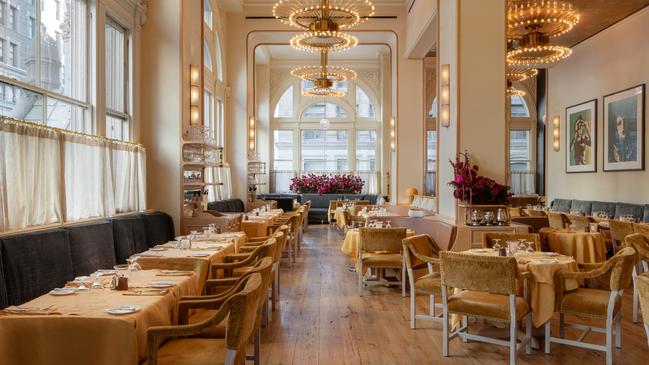
New York diners have traditionally worshipped the new and fashionable. The city’s “historic restaurants” were mostly expensive steak houses, regarded with suspicion as musty relics. But in recent years, a new wave of fine restaurants has opened in some of the city’s most extraordinary renovated urban spaces.
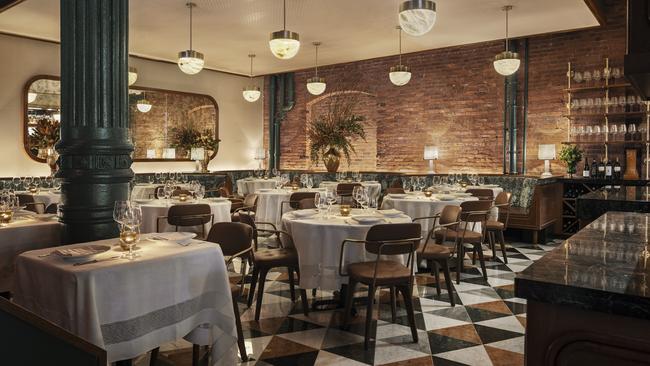
SHOCK OF THE OLD
Last year, the high-end Italian eatery Torrisi took over the expansive Gilded Age interior of the storied Puck Building in downtown’s Nolita. Dating from 1885, it was the home of America’s first great satirical magazine, Puck, and a famous golden statue of the cherubic character wearing a top hat still graces the main entrance. With soaring ceilings, cast-iron columns and an open kitchen, the restaurant is a cathedral to gastronomy, where tuxedoed waiters serve such delicacies as sweet and sour sardines or Capellini Cantonese. Reservations have been challenging since the New York Times gave Torrisi its top reviewer rating, three stars, in February, but walk-ins are accepted at the bar.
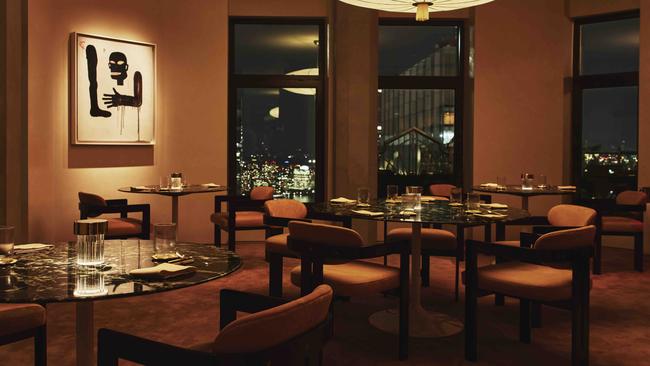
DECO DECADENCE
The Empire State Building has no restaurant or bar at its famous Observation Deck. Instead, for the most spectacular “gastro-architectural adventure” in Manhattan, head to SAGA, perched on the 63rd floor of a lesser-known Art Deco marvel in the Financial District. Completed in the depths of the Great Depression in 1932, the soaring 290m tower was for many years the third tallest building in the world. The top floors were designed as a triplex penthouse for the jazz age oil tycoon Henry Latham Doherty, who listed himself in city records as the building’s janitor. In the 1970s, they were used by insurance giant AIG, the chairman of which, Hank Greenberg, became notorious for hosting debauched Don Draper-style parties for clients in his private aerie. Today, the atmosphere is more restrained. Guests enter via a magnificent red-marble lobby and take a dedicated elevator to the two Michelin-star venue, dining on a seven or four-course seasonal menu while the lights of FiDi and the Brooklyn Bridge glitter below. The more economical option is to climb narrow stairs to the Overstory bar on the top floor, which also has a deck and the same jaw-dropping views – just like the Empire State, only with martinis and Gin Fizzes.

SWEDEN TAKES NEW YORK
One of the most exciting new museums in the city is Fotografiska, a branch of a renowned Stockholm-based institution devoted to contemporary photography. (The third branch is in Tallinn, Estonia.) It’s set, improbably, in a Renaissance-style 1894 church mission house with Flemish and Gothic touches, on Park Avenue South. Restaurant Veronika, in the mission’s former library, has become an instant hit. Named after the patron saint of photography, it has arched ceilings and original lead stained-glass windows framed by murals that evoke a shadowy birch forest. The kitchen offers high-end takes on Swedish-style classics – three types of schnitzel, seasonal asparagus, salt-baked beets – and American staples such as half-shell Maine scallops and pasture-raised steak with frites. You can also enjoy the space with just a drink at the splendid bar. After dinner, make a reservation at the museum’s haunting (and only mildly sacrilegious) Chapel Bar, the mission’s original private church once frequented by Edith Wharton, J.P. Morgan, Cornelius Vanderbilt and other scions of old New York. Today it’s dedicated to “communion, cocktails and culture”.
PIZZA THE ACTION
Last January, a branch of beloved Neapolitan eatery L’Antica Pizzeria da Michele opened its doors in the heart of the West Village. The Naples original, which dates from 1870, secured its fame after featuring in the book and film Eat, Pray, Love. The Neapolitan owner, Francesco Zimone, has joined two classic 1915 buildings on Greenwich St; one had been an Italian grocer’s, the other a famous drag queen fashion store, Lips. During renovations, Zimone exposed the buildings’ original brick walls and splendid oak structural beams, then added a wooden ceiling in homage to the neighbourhood’s old-world style. The basement room has evocative bare stone walls and a massive wooden table Zimone found on the street. Although he comes from Naples, Zimone thinks pizza is unfairly treated there as fast food, so chose to make his New York space more upscale. “Our pizzas are beautiful to look at,” he says. “And we want to present them in a beautiful setting, a stylish place closer to Milano.”
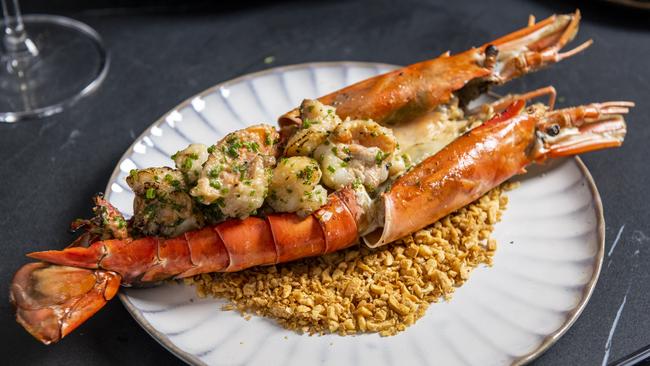
A KIND OF MAGIQUE
For well over a century, the Bushwick district of Brooklyn was the grittiest industrial corner of New York, and although it has been “hipster-ised” in the past decade, many manufacturing workshops remain open, including GCM Steel, which still makes large steel curbs for the NYC Department of Transportation. Just a few doors away, the building that houses Cocktail Magique – a new sensory extravaganza from burlesque maestro Company XIV – was actually built in 1931 as a junk shop used to melt lead. During its first renovation a few years ago, the narrow space was embellished with a wooden bar so vast the current performers use it as a stage. Audience members reclining in antique lounge chairs are plied with snacks and “enchanted” cocktails while watching an over-the-top cabaret. Think showgirls in giant champagne glasses, aerialist performances, tarot readings and extraordinary magic acts by gender-fluid artistes.
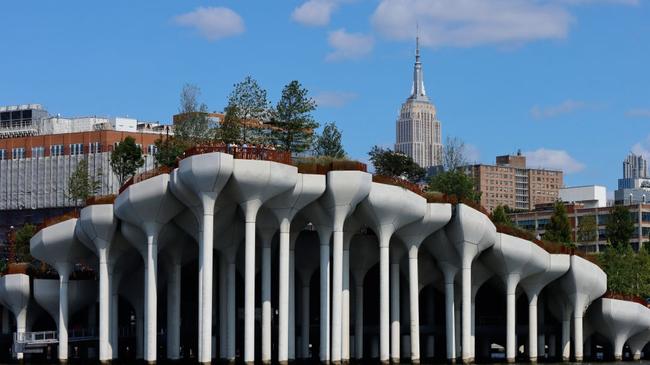
ON THE WATERFRONT
In the 1940s and ’50s, New York Harbour was the busiest in the world, and the shores of Manhattan were bristling with piers. The decline in shipping traffic left the waterfront desolate by the ’90s. One of the great survivors was Pier 57 on the Hudson River, in part because it was constructed in 1954 not from wood, but embedded in the shore via hollow concrete caissons. The stylish green structure became vacant in 2003 but last April reopened as a sprawling culinary complex. The up-market food hall features 16 top vendors, from the plant-based Ras to lobster-roll specialists The Galley and Mothershuckers Cajun raw bar. Guests can take meals and drinks up to the enormous rooftop, which has sweeping views of the skyline; at sunset, even the shores of New Jersey look beautiful. Afterwards, head next door to Little Island, the surreal new park rising from the Hudson River like a series of giant white mushrooms, funded by entertainment executive Barry Diller.
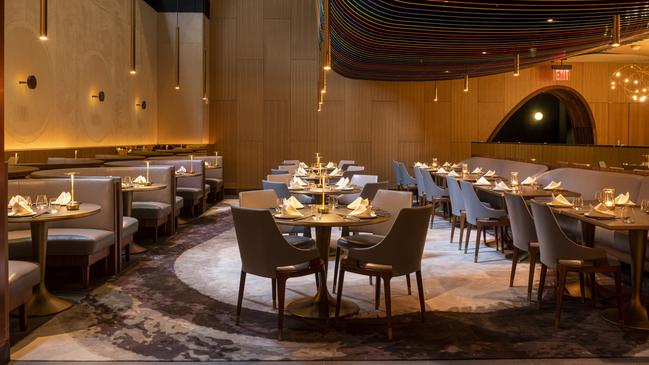
MUSEUM PIECES
The best Saturday date night in Manhattan is to visit the Museum of Modern Art, which stays open until 7pm. Afterwards, stroll a few metres to 53, the cutting-edge Asian restaurant located next door and beneath the museum’s new extended wing within a Jacques Nouvel-designed office tower. Entering the three-level eatery is a theatrical experience; you can imagine Holly Golightly from Breakfast at Tiffany’s coming here for a dim sum spree. The design of the casual bar section is spectacular, but the more formal main dining room is one of the most gorgeous spaces in Manhattan, with fluid Art Deco lines, bold colours, lavishly spacious booths, an array of intriguing artworks curated by the Friedrich Petzel Gallery and – something of a blessing in Midtown – superbly gentle acoustics. Australians are rarely impressed by Asian food in New York, but this is an exception since the menu was devised by one of Singapore’s top chefs, Akmal Anuar. Try the mushroom and truffle xiao long bao (soup dumplings) or crab and caviar shumai.
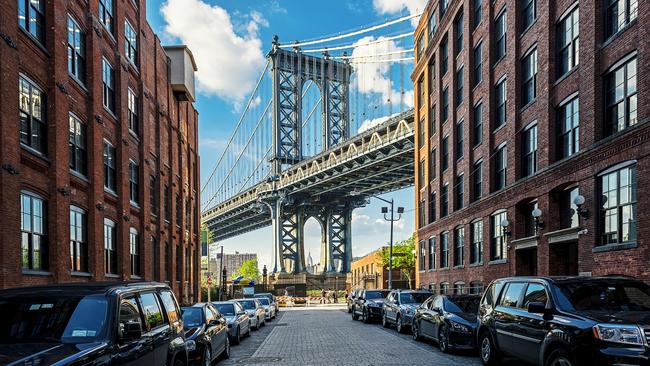
HASTA LA VISTA
The most Instagrammed spot in New York City is the corner of Water and Washington streets in Brooklyn’s Dumbo waterfront. Thousands come daily to pose in the man-made canyon of towering cast-iron warehouses that frame the Manhattan Bridge over the East River. Few visitors realise that hovering in a loft space upstairs is a new high-end restaurant and cocktail lounge called Gair. Opened in February, it gets its odd name from Robert Gair, a Scottish immigrant who, in the late 1800s, made his fortune by, of all things, creating the first folding cardboard boxes. He went on to turn Dumbo into America’s printing powerhouse. The restaurant maintains the 1904 factory building’s industrial aesthetic, with sandblasted concrete walls and a horseshoe-shaped bar of Brazilian basalt and white oak. The menu has creative bar food and heartier fare such as koji-cured flatiron steak with kombu, sea lettuce and oyster mayonnaise, or the more straightforward “smash” burger. Cocktail of choice? In this hyper-photographed corner, try the Under the Influencer, a blend of mezcal, passionfruit, cayenne and lager.

WHAT A HOOT
What could be more New York than the Friends Building? That’s the locals’ shorthand name for the West Village corner spot that served as the exterior for the apartment where the gang lived in the long-running sitcom. Don’t just take a photo, though. The charming restaurant on the ground floor, Little Owl, has become a downtown staple since it opened 20 years ago. Located in a quirky 19th-century space with uneven wooden floors and pressed tin ceiling, it’s one of the cosiest and friendliest places in an area that was once the bohemian heart of New York City, but has in the past few decades become challenged by skyrocketing rents (blame it on the likes of Friends). The name comes from the carved owls, visible from the tables, that the owner spotted on a nearby building. The fare is high-end, French-accented comfort food. The restaurant also has pleasant outdoor seating, but you may be distracted by the rubbernecking walking tours crowding the corner taking photos. Stay inside, channelling the artists of yore.
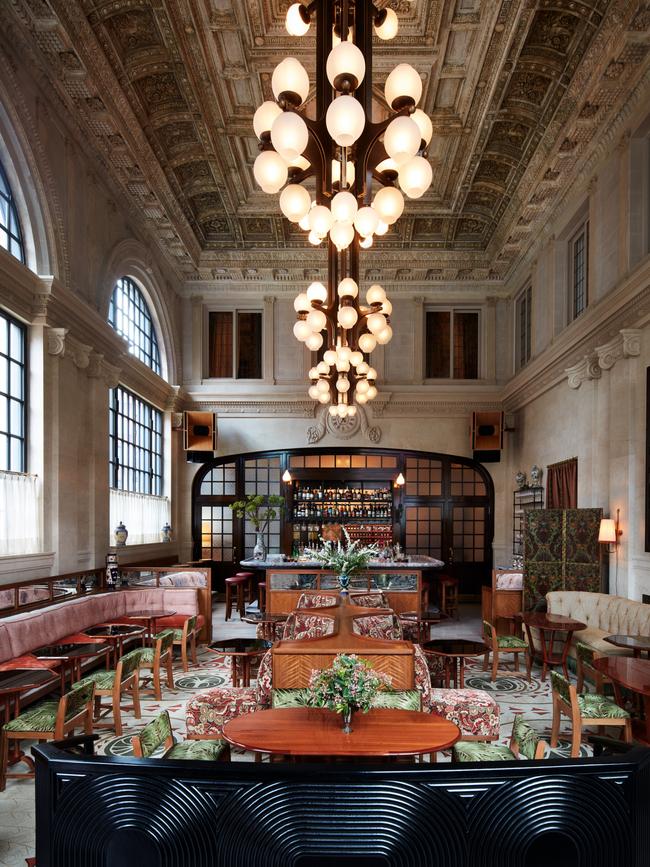
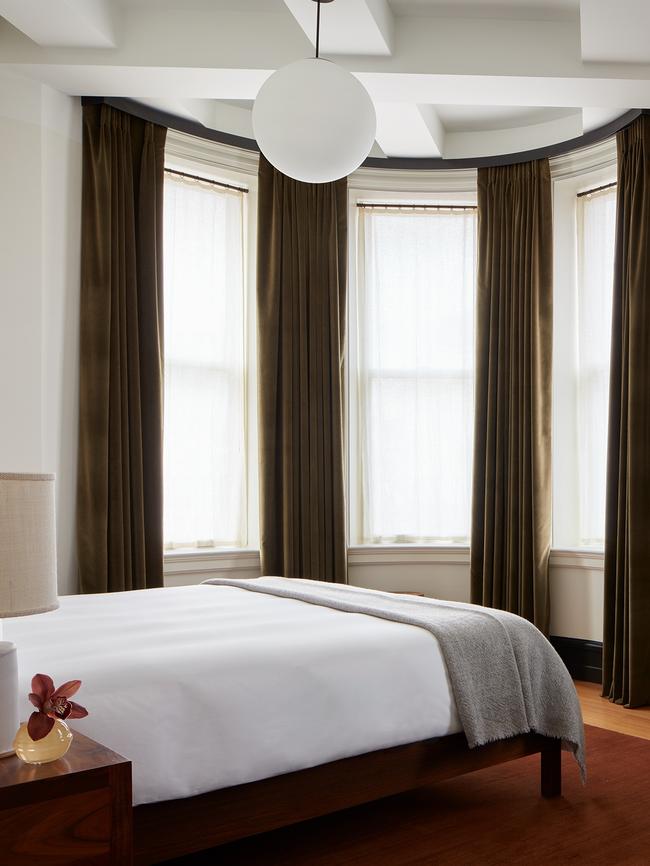
DEPOSIT YOURSELF HERE
Two of the most alluring new dining venues in New York are conveniently located within an extraordinary new hotel. Opened last year, Nine Orchard is in the 1912 landmark Jarmulowsky Bank, which for more than a century was the tallest building in the teeming immigrant district of the Lower East Side. It took a decade to restore the Tennessee marble floors and polished-wood fittings using blueprint drawings and archival photographs. Today, the former tellers’ room, with a 20m-high ornamental ceiling, is the spectacular Swan Room, where you can start the evening with cocktails and light snacks while lounging in velvet booths. For heartier fare, the Corner Bar has become a shopping mainstay of the LES community. Staying in the hotel, particularly if you can snag one of the light-filled triangular corner suites, is the real treat. It’s the perfect base for exploring the narrow surrounding streets – an up-and-coming area that’s been nicknamed Dimes Square – lined with the city’s hottest art galleries, cafes, vintage stores and fashion boutiques.

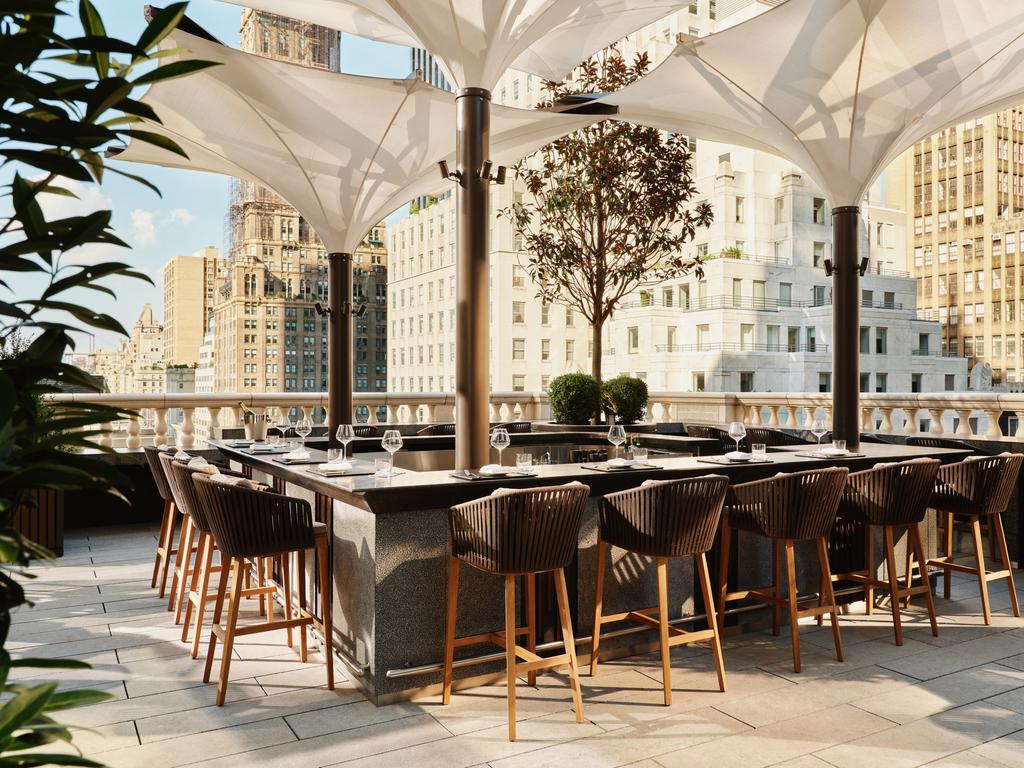



To join the conversation, please log in. Don't have an account? Register
Join the conversation, you are commenting as Logout